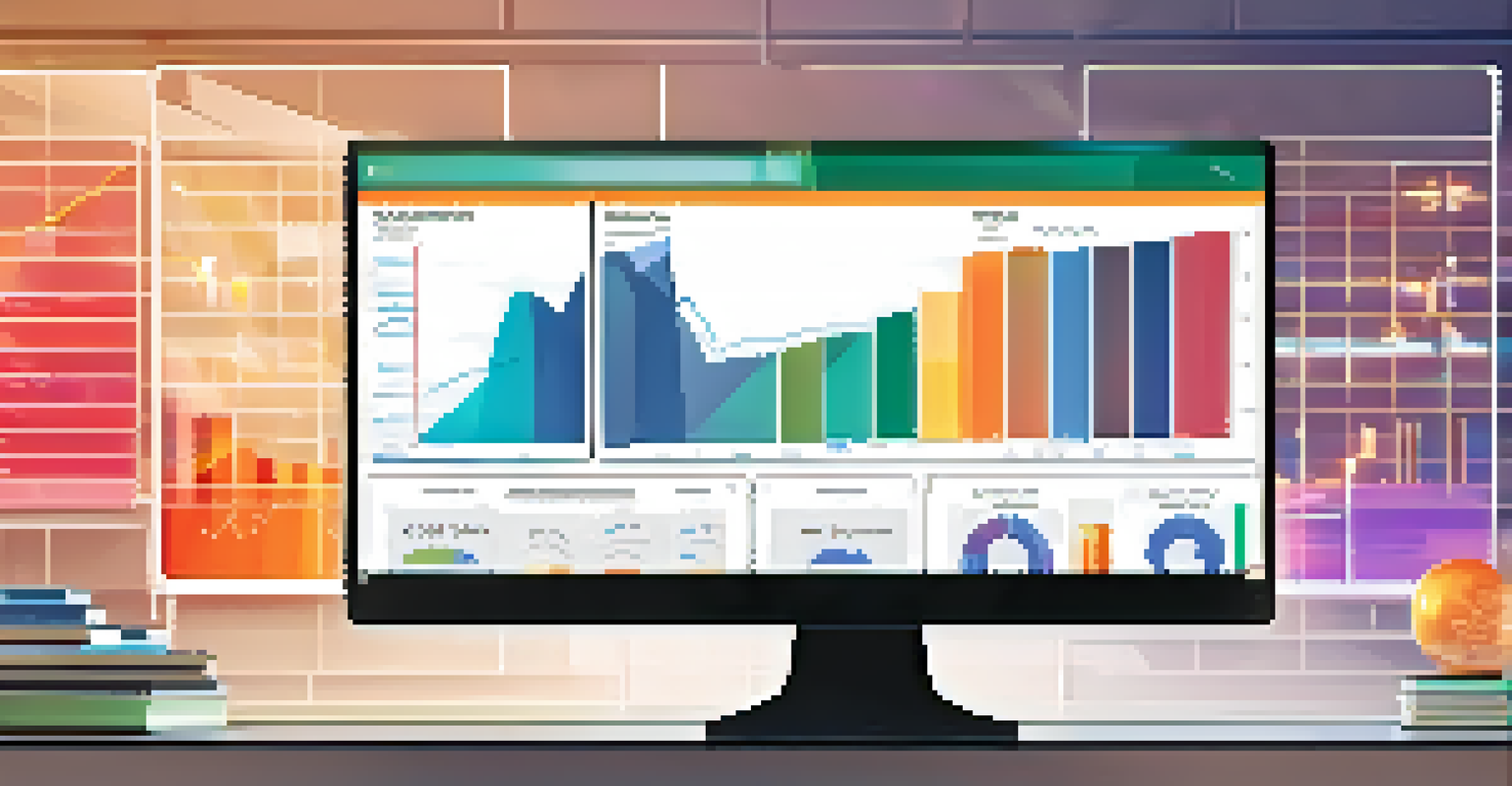Big Data in Education: Analyzing Student Performance Trends

Understanding Big Data in the Educational Landscape
Big data refers to the vast amounts of data generated every day, especially in the realm of education. This includes everything from student grades and attendance records to online interactions and engagement metrics. By harnessing this data, educators can gain deep insights into student performance and learning behaviors.
Data is the new oil. It’s valuable, but if unrefined, it cannot really be used.
In education, big data has the potential to personalize learning experiences, address individual needs, and enhance teaching strategies. For instance, analyzing patterns in student performance can help identify which teaching methods are most effective. This means that data isn't just numbers; it’s a key to unlocking better educational outcomes.
However, understanding and utilizing big data isn’t just a matter of having the numbers. It involves interpreting this data correctly and turning it into actionable insights. Schools and universities are increasingly investing in data analytics tools and training for educators, ensuring that they can make data-driven decisions.
Collecting Data: Sources and Methods in Education
The first step in leveraging big data is understanding where it comes from. In educational settings, data is collected from various sources, including student information systems, learning management systems, and even social media interactions. Each source brings a unique perspective on student engagement and performance.

For example, a learning management system can provide information about how often students log in, which resources they access, and their submission patterns. By analyzing this data, educators can pinpoint which resources are most effective in promoting learning. Understanding these trends helps in creating a more engaging curriculum.
Big Data Personalizes Learning
By analyzing individual student data, educators can tailor teaching methods to meet unique learning needs.
Additionally, surveys and assessments contribute valuable qualitative data. When educators gather feedback directly from students, they can better understand challenges and successes. This combination of quantitative and qualitative data allows for a more comprehensive view of the educational landscape.
Analyzing Student Performance: Key Metrics to Consider
When it comes to analyzing student performance, there are several key metrics to focus on. These include grades, attendance, participation rates, and even social-emotional indicators. By examining these metrics together, educators can build a holistic view of student progress.
Without data, you're just another person with an opinion.
For instance, a drop in attendance might correlate with lower grades, prompting educators to investigate the root causes. Are students facing challenges at home, or is the material not engaging enough? Identifying these trends can lead to timely interventions that support student success.
Moreover, advanced analytics can reveal patterns that may not be immediately obvious. For example, machine learning algorithms can predict which students might struggle based on their data profiles, allowing for proactive support measures. This predictive capability is a game-changer in the quest for improving educational outcomes.
Personalized Learning: Tailoring Education to Individual Needs
One of the most exciting applications of big data in education is personalized learning. By analyzing data on individual student performance and learning styles, educators can tailor their teaching methods to meet each student's unique needs. This could mean adapting lesson plans, providing additional resources, or offering one-on-one support.
For example, if data shows that a student excels in visual learning but struggles with text-based materials, educators can offer more videos and interactive content to foster understanding. This level of customization not only boosts engagement but can significantly improve learning outcomes.
Predictive Analytics Improves Outcomes
Using historical data, predictive analytics helps identify at-risk students early, allowing for timely interventions.
Furthermore, personalized learning encourages students to take ownership of their education. When they see that their learning paths are designed specifically for them, they are more likely to stay motivated and invested in their studies. This sense of ownership is crucial for long-term academic success.
Predictive Analytics: Anticipating Challenges and Opportunities
Predictive analytics takes data analysis a step further by forecasting future outcomes. In education, this means using historical data to predict which students may face challenges or require additional support. By identifying at-risk students early, educators can implement interventions to help them succeed.
For example, if data indicates that students who miss a certain number of classes are likely to fail, schools can develop strategies to improve attendance. This proactive approach not only helps individual students but also enhances overall classroom performance.
Moreover, predictive analytics can inform resource allocation. Schools can identify trends in performance across different demographics and tailor programs to address specific needs, ensuring that support reaches those who need it most. This strategic approach transforms data from mere numbers into a powerful tool for educational improvement.
Challenges of Implementing Big Data in Education
While the benefits of big data in education are clear, implementing it comes with its own set of challenges. Data privacy and security are major concerns, as educational institutions must protect sensitive student information. Striking the right balance between using data for improvement and safeguarding privacy is crucial.
Additionally, there is often a gap in data literacy among educators. Not all teachers are trained to analyze and interpret data effectively, which can lead to misunderstandings or missed opportunities. Providing professional development and training in data analytics is essential for maximizing the potential of big data.
Challenges in Data Implementation
Implementing big data in education faces hurdles such as data privacy concerns and gaps in educators' data literacy.
Finally, the integration of various data sources can be complex. Ensuring that systems work together seamlessly can pose logistical challenges. However, overcoming these hurdles is vital for creating a data-driven educational environment that benefits both students and educators.
The Future of Big Data in Education: Trends to Watch
As technology continues to evolve, so too will the applications of big data in education. One exciting trend is the rise of artificial intelligence (AI) in analyzing student data. AI can sift through vast amounts of information quickly, providing insights that might take humans much longer to uncover.
Another trend to watch is the increasing emphasis on data democratization. This means making data accessible to all educators, not just those with technical expertise. When teachers have the tools to analyze data themselves, they can make informed decisions that directly impact their students’ learning experiences.

Lastly, the integration of big data with other emerging technologies, like virtual reality (VR) and augmented reality (AR), promises to create immersive learning experiences. As we look to the future, the potential of big data to enhance education is truly limitless, paving the way for more effective and engaging learning environments.